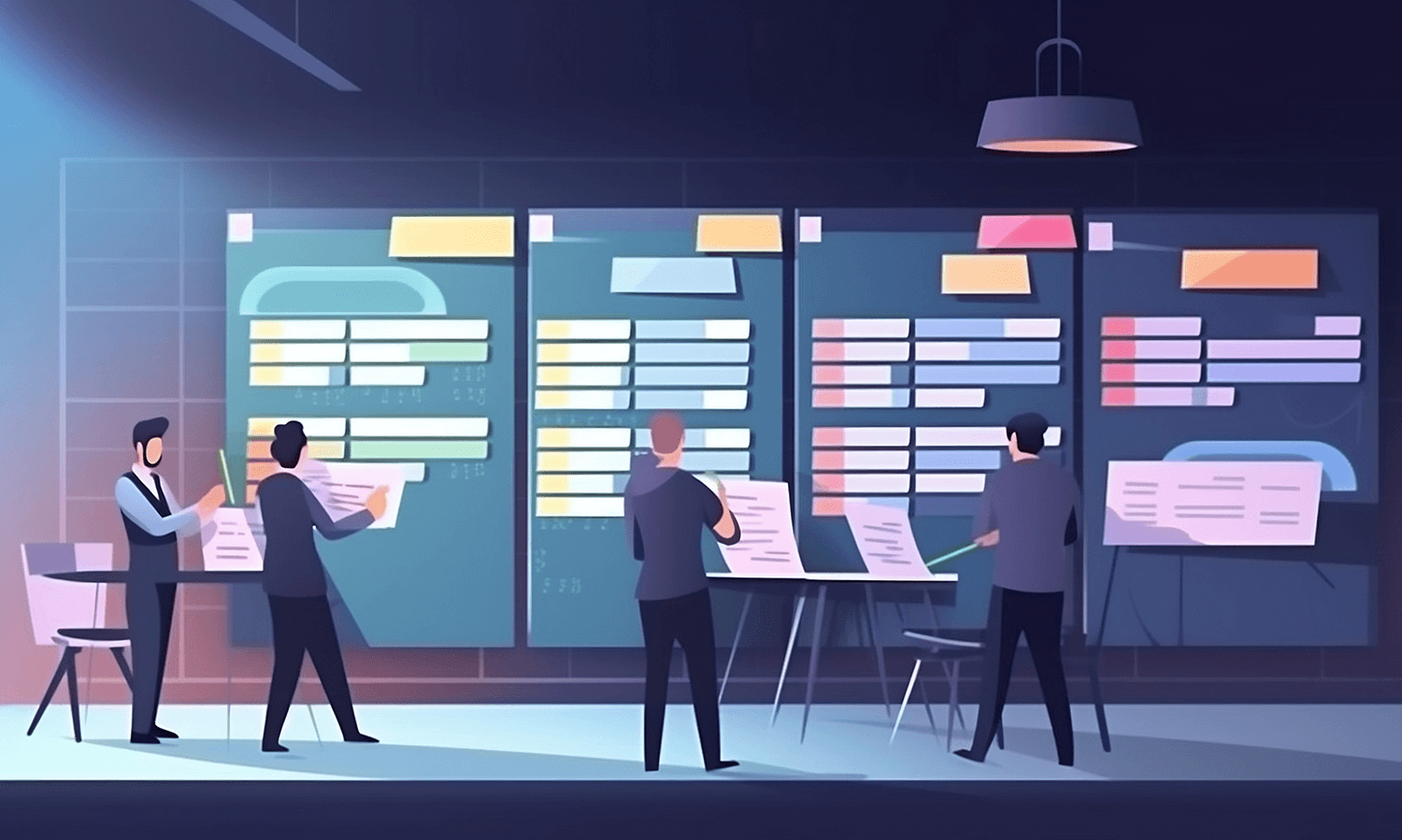Converting 55 global distributed programs during Covid
A case study on transforming 55 globally distributed programs from Waterfall to Agile during Covid
Lead Agile Coach
Organization
One of the five largest insurance companies according to Forbes
Achievement
A top-to-bottom transformation of the Property & Casualty Insurance and specialty risk division; from creating the mythology and playbook to the execution of these throughout the organization. The adoption of this scaled approach succeeded in aligning all delivery centers worldwide in order to synchronize and gain visibility of all deliverables from all relevant value streams.
Challenge
A Waterfall-to-Agile transformation for the entire Property & Casualty Insurance and specialty risk division of the company during the Covid pandemic.
Solution
Created a new scaled Agile approach and playbook. Trained at all levels, created new role definitions, replaced traditional activities with Lean/Agile alternatives, created new tooling structures as well as establishing new communities of practice.
I was hired as a lead Agile coach in a monolithic insurance company that functioned using Waterfall almost exclusively (with the exception of two small pilot teams out of thousands). My onboarding was brief and intermingled with a series of intensive meetings. During these we worked separately with each of the various leaders to identify both opportunities and challenges in their specific areas before we brought them together for the scheduled creation of a 5-year plan.
Our plan to implement Agile required the alignment of business, tech, and delivery in order to achieve agility. Even though leadership was very motivated, they understood that the process of change itself would be our greatest challenge.

The Mission: Convert 55 globally distributed programs from Waterfall to Agile
Proof of Concept
The company started the Agile transformation based on the legends and stories of how much Agile could improve both the bottom line of the company, and the experience of teams. There was no actual proof within this company so we began with a Proof of Concept (PoC) to expand buy-in, alleviate fears, and to work out the company’s unique cultural challenges before pushing through the larger transformation.
Building on early successes
After a successful PoC phase we moved on to the bulk of the teams. During this time several new divisions reached out to us for Agile coaching after witnessing how our other teams had improved. Each group had its own priorities which we made an effort to align with the company’s overall initiative.

Covid and virtual teams
When the Covid pandemic struck early in the transformation process, the company was forced to switch to running virtual teams which it had never done before. This provided an extra challenge as well as an opportunity to build trust and an openness to experimenting with new working patterns. Ultimately, the teams witnessed that even a pandemic could not stand as an excuse to fail in our goal of agility.
Getting Buy-In from the Middle
We had the support of leadership despite three major reorganizations that happened within my time there; however, one of the greatest stumbling blocks came from middle management. Program managers, project managers, and others required quite a bit of support in order to earn their buy-in.
Retraining Agile contractors
Our coaching team had divided to support the 13 delivery centers across the globe. Normally we only train those who need it, but in this circumstance it meant we needed to train everyone. Roughly half received direct coaching, while the rest received a more streamlined training to align them with new processes.
This led to shortened learning curves, more effective integration, and quicker boosts to team productivity. However, it also revealed to us that the ‘Agile’ contractors that the company worked with were less Agile-ready than they had hoped and these teams also needed some degree of training.

A Massive Retooling
We were in uncharted territory with this Transformation. In addition to the process and role changes, we had to overhaul the entirety of their massive tooling structure which meant changes in how everyone would track their work (even down to the metrics they would use for validation). We developed a completely new Jira structure and hierarchy, new centralized Systems of Record (SoR), and we trained the entire organization from top to bottom in order to ensure a smooth transition that afforded us immediate feedback, increased buy-in, and better support for all individuals involved.
Other major challenges:
- Adapting to new roles and responsibilities.
- The creation of Communities of Practice (CoP) as well as drop-in clinics.
- Establishing a mentorship Community of Practice.
- Standardizing all teams tracking documentation, and collaboration tools.
- The creation of a Definition of Ready for Features and Initiatives.
- Establishing an objective prioritization model utilizing business value.
- Proactively creating a “no blame” culture Guiding teams coming from a Waterfall culture to be more empowered within the new Agile environment.
Our tangible successes:
In the end the transformation resulted in improvements in both culture and delivery, but more importantly, a clear and transparent visibility of all Agile work throughout the organization.
- Release frequency was reduced from every six months to monthly.
- We moved all initiatives, capabilities and features from a variety of unconnected individual systems to a central SoR enabling visibility and transparency across the enterprise.
- The mentorship CoP had already implemented a Leadership development program and had plans to cover Professional Development, Networking, and more.
- We created Journey Owners, enabling faster prioritization and improved business impact of delivered features by roughly 40%.
- We boosted team performance across the division by an average of 65%.
- Improved the vetting & hiring process for contractors, Scrum Masters, BAs, & Product Owners.



